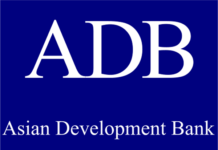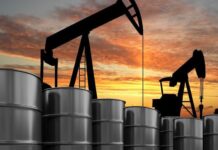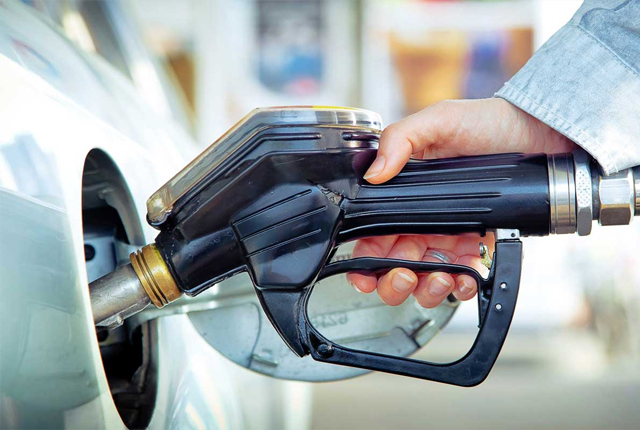As the clock strikes twelve on Sunday night, Pakistanis will be eagerly awaiting the government’s announcement on the fuel prices for the next fortnight. The anticipation is high, as rumours of a significant price cut have been swirling in the media for the past week. Speculations are rife, with some reports daring to suggest that the government might wield the axe on petrol and diesel prices, slashing them by a staggering Rs 38 to Rs 41 per litre.
However, as dawn broke on Monday, the global oil market staged a comeback from last week’s slump, pouring cold water on our hopes of significant relief. On a brighter note, the Pakistani rupee has flexed its muscles against the US dollar, offering a glimmer of hope for a potential downward revision.
So, what can we anticipate from this week’s verdict? Primarily, it’s crucial to underscore that all conjectures about potential price reductions are provisional at best. The final prices of petrol and diesel hinge on two key components: the ex-refinery price and the Inland Freight Equalisation Margin (IFEM), both of which are computed using moving averages that are settled on the day of the price decision itself — a fortnight after the preceding one.
“It’s premature to make any assertions; the fortnight is still being priced out,” remarks Omar Shafqaat, Chief Operating Officer at Taj Gasoline. Echoing this sentiment, Hassan Tahir, CEO of Hi-Tech Lubricants, adds, “There’s still a window before the final pricing of both products is determined. It’s impossible to forecast whether the Government will hike or slash the price of the products. However, given the current global crude prices and the status of the Pakistani Rupee, the trend appears to be bearish.” As a result, any circulating predictions of price increases or decreases are merely speculative and far from conclusive.
However, this doesn’t preclude us from indulging in a bit of speculation.
Last week’s most frequently cited estimates were price cuts of Rs 38 to Rs 41 for petrol and Rs 18 to Rs 19 for diesel. Based on our preliminary analysis, we estimate that petrol and diesel could both see reductions around Rs 32. However, Profit also advises caution as there could be no reduction at all if the government opts to enforce sales tax on these two products’ prices.
Before we delve into how we arrived at our tentative price reductions, let’s first understand how the pricing mechanism for these two commodities operates.
Pricing a litre of fuel
Fuel pricing in Pakistan is composed of six key elements: the ex-refinery price, the Inland Freight Equalisation Margin (IFEM), distributor margin, dealer’s commission, the Petroleum Development Levy (PDL), and sales tax.
Firstly, the ex-refinery price is set by the Oil and Gas Regulatory Authority (OGRA) rather than the refineries themselves. This is the charge local refineries impose on Oil Marketing Companies (OMCs) for their product. The price is calculated using the import parity price formula, which takes into account various refinery expenses. The retail prices of petrol and diesel are Rs 323 and Rs 318 respectively, but their ex-refinery prices are actually Rs 243 and Rs 253.
Following this, we have the IFEM which serves to harmonise prices across the country. Without it, there would be significant price differences between cities like Karachi and Islamabad. It reimburses all road transportation costs incurred by the OMCs from the freight pool. The current prices of petrol and diesel include IFEMs of Rs 6 and Rs 1 respectively.
Next in line is the OMC margin, which is the maximum profit OMCs earn per litre of petrol. This margin is set by the government of Pakistan (GoP) and notified through OGRA. Similarly, the dealer’s commission is what a petrol station owner earns per litre. The current prices of both fuels include OMC margins and dealer commissions of Rs 7 and Rs 8 respectively.
Lastly, we have the PDL and sales tax collected by the GoP as part of the fuel price. The PDL is set by the ministry of energy at Rs 60 for petrol and Rs 50 for diesel. The sales tax is applied as a fixed percentage on all components. However, it’s worth noting that current fuel prices do not include any sales tax.
Let’s get to how we calculated the price now.
Profit’s estimates
The primary components we needed to decipher were the ex-refinery price and the IFEM. While OGRA does dissect the ex-refinery price into various sub-elements for comprehension, it often leads to more perplexity than clarity. Consequently, Profit employed very crude calculations (no pun intended) to retroactively determine the ex-refinery price, taking into account the price of crude and the value of the Rupee against the US Dollar at that time.
We considered the average daily price of three crude blends: Arab Light, Murban, and Dubai. These are the principal crude blends imported into Pakistan. Profit was unable to assign weights to the prices of the various crude blends due to a lack of monthly import data from either the Government of Pakistan or United Nations Comtrade. Our decision to utilise all three blends, and our propensity to assign weights, stems from the fact that while Arab Light is perhaps the most prevalent crude blend imported, the ratio between it and its Arab counterparts is perpetually fluctuating. Moreover, Profit had received countless reports that UAE’s blends had gained significant popularity over the summer. As a result, we decided to include all three blends.
We examined the past six fortnightly fuel price updates dating back to July 16 to create a denominator that would allow us to convert the cost of an average barrel of crude to the ex-refinery price listed at that time. In doing so, we considered the average price of all three aforementioned crudes 15 days prior to each fortnightly update. Additionally, we used the average price of the US Dollar against the Rupee over those fifteen days to determine the cost of a barrel of crude in Rupee terms.
After calculating our denominator, we then determined the price of a barrel of crude using the average price of crude blends from October 1 to October 9 and incorporated the average rate of the US Dollar against the Rs over that period as well. Our estimates place the ex-refinery price of petrol at an upper limit of Rs 231, a lower limit of Rs 210 with a median value being Rs 219.
In a similar vein, we calculated the ex-refinery price of diesel to be Rs 245 at its peak, Rs 221 at its lowest point, with a median value of Rs 233. For both commodities’ IFEMs, we selected the highest, lowest, and median IFEM across all fortnightly updates from July 16 onwards. We then attached these IFEMs to their corresponding petrol and diesel ex-refinery prices. The dealer’s commission, OMC margin, and PDL are constants; hence we simply used their values from October 1’s fortnightly update.
The prices for our chosen crudes were taken from daily prices listed as part of OPEC’s daily pricing. It’s crucial to note here that these three blends’ daily pricing has not been updated since October 6 and thus does not reflect Monday’s surge in crude market prices. Other crude blends have seen their prices change; these will follow suit once they are updated.
Consequently, we anticipate petrol prices to range between Rs 291 and Rs 308 with a median price of Rs 298. This corresponds to reductions of Rs 33, Rs 15, and Rs 25 respectively. For diesel, we expect prices to fall within Rs 286 and Rs 306 with a median price being Rs 297. This translates into reductions of Rs 32, Rs 12, and Rs 21 respectively.
However, there is reason to suspect that everyone’s predictions — including our own — could be entirely off-base come Sunday.
Why there could be no discount at all
“Mirroring the downward trajectory in the global market, price estimates are in freefall. Just last week, the S&P Platts market was left reeling from a precipitous $7/Bbls drop. Furthermore, the PKR/USD exchange rate plays a pivotal role in exacerbating this decline,” expounds Danish Rasool, Senior Manager of Strategic Planning & Commercial at Pakistan Refinery Limited. Yet, due to escalating tensions in the Middle East, global crude prices have skyrocketed by 5% overnight. Unless tensions deescalate, all of last week’s forecasts could be rendered obsolete as crude rebounds to its 2023 zenith from the previous month.
However, as Rasool astutely observes, the Rupee appears to be on a tear. Uncharacteristically, it seems impervious to global events. If it continues its current trajectory, we might anticipate some respite come Sunday. But this relief is contingent upon the Government passing on the savings to consumers – a prospect that is far from certain.
The sales tax currently stands at zero, having been completely abolished in early 2022. At full rate, it would amount to approximately Rs 50 if applied at current prices. The state’s coffers are not as flush as they would prefer, and reinstating the sales tax could provide some much-needed financial padding.
“In the past, it would have been challenging for provinces to demand an imposition of the sales tax due to the soaring prices. However, under current circumstances, provinces could potentially be accommodated and sales tax fully or partially reinstated,” explains Zeeshan Tayyeb, Group Chief Operating Officer at Gas & Oil Pakistan.
“This also serves as a convenient mechanism that could be employed to maintain price stability by adjusting the sales tax biweekly and keeping prices static – that is, imposing sales tax now and keeping prices unchanged. And subsequently reducing the sales tax rate when prices surge again,” Tayyeb adds.
























